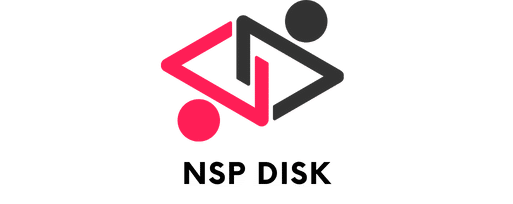What are the techniques for securing a multi-cloud environment?

In today's digital era, organizations increasingly rely on multi-cloud environments to drive efficiency, scalability, and innovation. However, the complexity of managing multiple cloud platforms poses significant security challenges. Securing a multi-cloud environment requires a strategic approach that ensures data protection, compliance, and operational integrity across diverse infrastructures. This article explores the best techniques and practices for securing a multi-cloud environment to maintain robust security postures and safeguard sensitive information.
Understanding the Multi-Cloud Environment
A multi-cloud environment involves the use of multiple cloud services and platforms from different cloud providers. This approach allows organizations to leverage the strengths of various providers, optimizing performance, cost, and functionality. While the flexibility of multi-cloud environments offers numerous advantages, it also introduces security complexities that demand vigilant oversight and robust security controls.
A découvrir également : How do you implement a data pipeline using Apache Spark on Kubernetes?
Organizations must recognize the importance of securing their multi-cloud environments to protect against data breaches, unauthorized access, and other malicious activities. A comprehensive security strategy that addresses the unique challenges of multi-cloud environments is crucial for maintaining data integrity and compliance with industry regulations.
Implementing Strong Access Management
Effective access management is vital for securing a multi-cloud environment. With multiple cloud providers involved, ensuring that only authorized personnel can access sensitive data and applications is paramount. Access management strategies should include:
A lire aussi : What are the steps to set up a secure remote desktop connection using RDP?
- Identity and Access Management (IAM): Implement IAM solutions to manage user identities and control access to cloud resources. IAM tools enforce policies that define user permissions, ensuring users have the appropriate level of access.
- Multi-Factor Authentication (MFA): Enhance security by requiring users to provide multiple forms of identification before accessing systems. MFA adds an extra layer of protection against unauthorized access.
- Role-Based Access Control (RBAC): Assign permissions based on roles within the organization. This approach ensures that users have access only to the resources necessary for their job functions, reducing the risk of unauthorized access.
By implementing robust access management practices, organizations can mitigate the risks associated with unauthorized access and ensure that their multi-cloud environments remain secure.
Ensuring Compliance and Security Policies
Compliance with industry regulations and security policies is essential for maintaining the integrity of a multi-cloud environment. Organizations must adopt a proactive approach to ensure that their cloud infrastructure aligns with regulatory requirements and internal security standards.
- Regular Audits and Assessments: Conduct regular security audits and assessments to identify vulnerabilities and ensure compliance with industry standards. These audits help organizations detect and address potential security gaps.
- Unified Security Policies: Develop and enforce unified security policies across all cloud environments. A consistent set of policies simplifies management and ensures that security controls are applied uniformly.
- Automated Compliance Tools: Utilize automated tools to monitor compliance in real-time. These tools can help organizations identify and remediate compliance issues promptly, reducing the risk of regulatory penalties.
By prioritizing compliance and implementing stringent security policies, organizations can maintain a secure multi-cloud environment and build trust with stakeholders.
Utilizing Advanced Security Tools and Technologies
Leveraging advanced security tools and technologies is crucial for protecting a multi-cloud environment. These tools provide comprehensive visibility, threat detection, and incident response capabilities, enabling organizations to respond swiftly to security threats.
- Security Information and Event Management (SIEM): SIEM solutions collect and analyze security data from multiple sources, providing real-time threat detection and incident response. SIEM tools help organizations identify and mitigate security incidents across their cloud environments.
- Cloud Access Security Brokers (CASB): CASBs act as intermediaries between users and cloud services, enforcing security policies and providing visibility into cloud activity. CASBs help organizations manage and secure data across multiple cloud platforms.
- Encryption and Data Loss Prevention (DLP): Implement encryption and DLP solutions to protect sensitive data. Encryption ensures that data remains secure during transit and at rest, while DLP tools prevent unauthorized data access and exfiltration.
By integrating advanced security technologies into their multi-cloud strategy, organizations can enhance their security posture and protect against evolving threats.
Adopting Best Practices for Cloud Security
Adopting best practices for cloud security is essential for safeguarding a multi-cloud environment. These practices encompass a range of strategies and controls designed to protect data and applications across different cloud platforms.
- Regular Security Training: Provide ongoing security training for employees to ensure they understand the latest threats and best practices. Educated employees are better equipped to recognize and respond to security incidents.
- Continuous Monitoring and Threat Detection: Implement continuous monitoring solutions to detect and respond to threats in real-time. Continuous monitoring helps organizations identify and mitigate security incidents promptly.
- Disaster Recovery and Business Continuity Planning: Develop and regularly test disaster recovery and business continuity plans. These plans ensure that organizations can recover quickly from security incidents and minimize downtime.
- Zero Trust Architecture: Adopt a zero trust security model that requires verification for every access request. Zero trust architecture reduces the risk of unauthorized access by ensuring that all users and devices are authenticated.
By adhering to these best practices, organizations can bolster their cloud security strategy and protect their multi-cloud environments from potential threats.
Securing a multi-cloud environment is a complex but essential task for organizations leveraging multiple cloud providers. By implementing robust access management, ensuring compliance with security policies, utilizing advanced security tools, and adopting best practices for cloud security, organizations can protect their data and applications across diverse cloud environments.
In conclusion, the key to securing a multi-cloud environment lies in a comprehensive and strategic approach that addresses the unique challenges of managing multiple cloud platforms. By prioritizing security and adopting proactive measures, organizations can maintain a strong security posture and safeguard their multi-cloud infrastructures against evolving threats.
